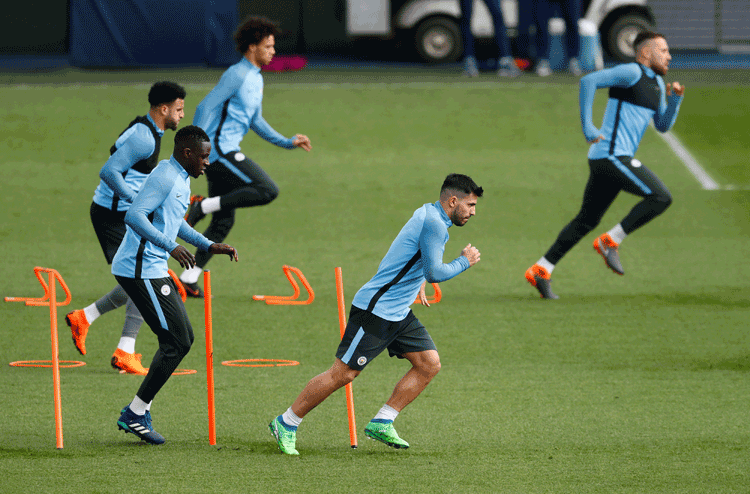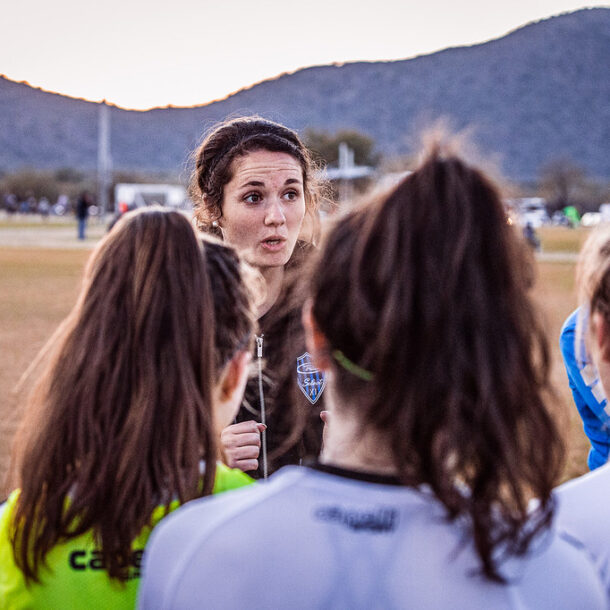
Blog Series: An Alternative, Specific, & Individual Oriented Approach For Soccer Conditioning
Pablo Toledo is Rush Soccer’s Sporting Project Director and Rush’s Coach Development Department leader.
Recapping how we got here in a few bullets:
- We covered overall conditioning principles: Adaptability, Overcompensation, Specificity, Overload, Individuality, and Reversibility, beyond the sole sport of soccer.
- We explained concepts related to stretching and flexibility and how they should be integrated to our sessions.
- We covered warm up concepts and design.
- We analyzed soccer specific physical demands
- We highlighted the importance of strength endurance, speed endurance, agility, coordination, explosive strength, and added injury prevention to the pool.
- We explained commonly used conditioning methods like Repeat Sprint Ability, Intermittent, and Interval Training and commented on their flaws in terms of the absence of the mental component and unspecific character.
Disclaimer: If all of this analysis had a strong subjective component, as many of it is based on my opinions (that I encourage you to question), even more subjective will be the conditioning approach presented in this post.
I have presented all of these topics to finally reach the core of the conditioning series, that is to simply respond how can I train my players to optimize their performance?
I purposely use the word performance here rather than shape, because it directs the reasoning to the real objective, that is preparing our players to perform at their best, not just making them capable of running more.
What I propose is not any sort of epiphany that I had but a mix of concepts that I’ve learnt from much wiser people than myself, and what I can contribute from a soccer coach standpoint. Like Cesar Luis Menotti said: “The more the coach knows, the less the conditioning coach works”.
Specificity is of utmost importance because, on top of the many reasons I already exposed, it also distributes the loads appropriately. What I mean by this is that you have to be careful with what you do at the gym, for example. If you overuse a quadriceps machine (leg extension) and those muscles hypertrophy, you might be increasing your risk of injury with your own training. The reason is that in every sprint, stop, turn, etc, you involve a series of muscles to facilitate and control the overall movement. For example, when you extend your leg in the machine, your quadriceps are contracting to create strength, but you also have your antagonist hamstring muscles extending, as well as some others participating as neutralizers. If one of them is overdeveloped in comparison to the others, we are in trouble.
As a way wiser conditioning coach than myself told me once: Have you noticed that we always train our players going forward and never backwards? Then people wonder why we have so many hamstring and calves strains.

Now, I didn’t really walk you through 7 blog posts to end up telling you that there’s nothing more specific than football itself so you should simply play scrimmages all day, but what I will say is that you can use what we know best as coaches to maximize your conditioning approach, that is how to modify elements or use conditions to increase or decrease the intensity, and to encourage certain physical demands. Think of dimensions and number of players: The less players, the more intense. The less space, the more intense.
Let’s think of an example, combining this with the usage of conditions. Let’s suppose, as is very on fashion nowadays (no judgement about it), that you’re very interested in having a very explosive team in the transition from attack to defense phase of the game, and you want your players to counterpress at maximum intensity and sustain the quality of the effort along the 90 minutes of the game (you see, we are talking about speed endurance again). If we analyze the effort that this requires, we could say we are talking about 10-15-20 yards max of a high intensity reaction, at full speed, for a total of 5 seconds, that includes changes of direction and stoppages (highlighting the agility component again). Now, based on that information, I’ll give you three alternatives for training this and you can decide which one you think is best:
- Knowing the distance that is covered and necessity of developing speed endurance, I set up two cones in a 15-20 yards line and I have the players sprint following a 1:5 work:rest ratio, typical of the Repeat Sprint Ability. 4 sets of 6 repetitions each.
- In an effort to elevate the specificity of the exercise, I set up a circuit that includes sprinting but also changes of directions and stoppages and takes about 5 seconds to cover at max intensity, and I work on a 1:5 work:rest ratio.
- I set up a small sided soccer field and I play a 4v4 ‘Sheffield Wednesday’ type of match, in which the two teams play without goalkeeper and we define a handball style small box around the goal that players can’t step in.
Do you see where I’m going? Which one is more specific? Which one is adding the better mental component? And ultimately, which one is creating the right overload?
Let’s explore together the third option in further depth. The fact that the teams don’t have goalies in a small sided field and neither players can even stand close to the goal creates an extreme exposure defensively. Your players, if this is the first time they play the game, will discover in no time that the way to win the game is to shoot to goal quick, what will force the defending team to try to block the shot immediately after losing the ball (basically counter pressing), so the effort and the demands performed are going to be immensely specific, and the conditions of the game cause continuous repetitions, even more than the real game, creating the overload desired. Moreover, the effort of the player will very likely be even higher than using a method like RSA, as the player will actually be motivated by winning the game while playing soccer, rather than getting fit to play soccer later. To make it even better, you can actually coach soccer while you do it, not just stare at a stopwatch. Lastly, the player will run according to his current capacity, rather than a fixed number of sets and repetitions that we don’t know if they’re appropriate for each player’s capacity as we are using a ‘one size fits all’ in options 1 and 2.
Can you see it?
Play the game and sit back for a second, paying attention to the number of times a player repeats the desire effort. By simply using your soccer coach toolkit, you can modify the position on the field of a player that’s doing too much or too little, reduce or increment the number of players, or vary the dimensions to modify the intensity of the exercise.
Sometimes people escape from methods like this because we have a misleading necessity to measure everything and this approach does not make it as easy as the others. That’s something to be careful of.
Also, I don’t want to be misunderstood. Sometimes you just can’t do it this way and you need to use as I call them pure methods. I do that a lot for injury prevention reasons for example. If I’m trying to add components for flexibility or proprioception, unfortunately I haven’t really figured out how to do it with such a high level of specificity involved, so I’m not saying that everything is else is wrong but just that, when possible, this is more desirable than other methods (or at least I consider so)
Hope you found this post interesting coach!









